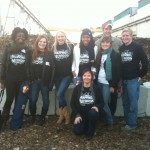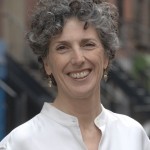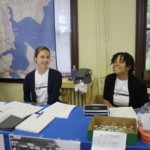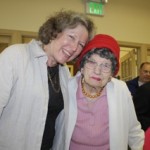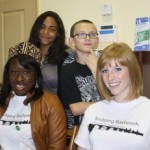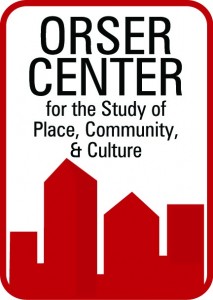“Baltimore Neighborhoods, Baltimore History”
8:30 am – 4:30 pm – Friday, May 11, 2012 – Maryland Historical Society
200 West Monument St. – Baltimore, MD 21201
SPONSORS: Baltimore City Historical Society, Maryland Historical Society, the Orser Center, and WYPR (media partner)
To register, please visit this website. The fee is $20 and there is a happy hour following the conference at the historic Owl Bar at 5:30pm.The “Baltimore Neighborhoods, Baltimore History” conference seeks to cultivate and promote the rich history of Baltimore City. Neighborhoods play a complex role in Baltimore’s past and present and illustrate the struggles and rewards of building a sense of community within an urban space. Programming features two panel discussions and two presentations on recent work that preserves and commemorates the complicated history of Baltimore. The conference’s speakers range from local academics to representatives from city organizations for heritage and preservation to community activists.
FULL PROGRAM
Conference fee: $20. Morning coffee and Lunch will be provided
Registration: http://www.acteva.com/booking.cfm?bevaid=227647. You may also pay at the door.
Parking: Limited parking is available at the MdHS
Questions: Direct to Suzann Langrall at baltimorehistory@law.umaryland.edu / 410-706-4529
PROGRAM
8:30am REGISTRATION OPENS
8:30am – 9:15am COFFEE & MUFFINS
9:15am – 9:30am WELCOME, Mike Franch, Baltimore City Historical Society
9:30am – 11:00am PANEL: CLASSROOM AND COMMUNITY
Dale Glenwood Green, Morgan State University, Morgan Park + Wilson Park: Historic African American Neighborhoods
Few places in Baltimore rival the role that Morgan Park and Wilson Park played in the lives of African Americans. Professor of Architecture and Historic Preservation Dale Glenwood Green has worked to connect heritage preservation, tourism and education to historic African American neighborhoods. Green and with his students explored the impact of the development of the Morgan State University campus on the area adjacent to it. Green will tell a story of race, place and time of the supposedly “separate but equal” status accorded these Baltimore neighborhoods
Denise Meringolo, UMBC, Public History Training on the Westside
Meringolo will discuss her efforts to harness service learning as a pedagogical tool for training the next generation of public historians. In the spring of 2012, her graduate public history course is partnering with Baltimore Heritage in a course designed to challenge students to recognize history as a vehicle for smart growth and urban redevelopment. She will discuss the ways in which the architectural history of Baltimore’s west side can assist city residents in their efforts to preserve livable neighborhoods.
Betsy Nix, University of Baltimore, The People’s Free Health Clinic in 1970s Waverly
In the wake of assassinations and urban upheaval in the late 1960s, a group of young volunteers tried to respond in a positive way by delivering free basic medical care and mental health services to the Waverly community. In the fall of 2012, undergraduate students at the University of Baltimore interviewed some of the founders of the institution that would grow into the People’s Community Health Center, which still exists today. In this session, Betsy Nix and honors student Beverly Bowers will describe the project and share their initial findings.
11:15am – 11:50am PRESENTATION: Mary Mashburn, Globe Posters Comes to MICA
The Globe Poster Company with its vivid day-glo posters tacked up on telephone poles, abandoned buildings, check cashing joints, coffee shops, bars, and churches became part of the neighborhood landscape in Baltimore, DC, and well beyond. Over its 80 years of existence Globe’s production facility was located in several Baltimore neighborhoods, and it reached across racial and ethnic boundaries to serve a wide variety of constituencies. The Italian-American printers produced posters, tickets and handbills for primarily African American promoters and for musicians from big band days through Hip Hop and Go Go. 2
11:50am – 1:30pm LUNCH
Award of Joseph L. Arnold Prize for Outstanding Writing on Baltimore’s History in 2011
SPEAKER: Aaron Henkin, WYPR’s THE SIGNAL-“Out of the Blocks: The concept is simple: one hour of radio – one city block – everybody’s story”
1:30pm – 3:00pm PANEL: HISTORIC PRESERVATION, COMMUNITY SUSTAINABILITY
Eric Holcomb, Baltimore Commission for Historic and Architectural Preservation, Beyond History: Rethinking the Goals of Historic Preservation
Today, Baltimore has more than 150 landmarks and 32 local historic districts comprising more than 10,000 structures. Thousands more sites are listed on the National Register for Historic Places. We have justified preserving these buildings because they are physical links to our past, but do we preserve history for history’s sake only? 20th Century history of Baltimore suggests that historic preservation has been an essential component to creating and maintaining healthy, dynamic neighborhoods that nurture human development. This presentation argues that it is time to rethink the presently accepted goals of historic preservation in order to fully address the challenges and opportunities of today.
Eli Pousson, Baltimore Heritage, Parks and Preservation in West Baltimore Neighborhoods
Over the past two years, Baltimore Heritage has worked to connect historic preservation, public history, and neighborhood revitalization in the historic neighborhoods of West Baltimore. This past spring, these efforts led to a new partnership with the Parks & People Foundation and community organizations around Lafayette Square, Harlem Park, Franklin Square, and Union Square, to establish the Friends of West Baltimore Squares—a community organization dedicated to promoting the recognition and use of heritage and green space as important assets for community development. Baltimore Heritage Field Officer Eli Pousson will provide a short introduction to their work with the Friends of West Baltimore Squares and how they combine heritage programs, public archaeology, and new online interpretation with community organizing and neighborhood greening to build support for healthier and stronger neighborhoods.
Todd Marcus, Newborn Holistic Ministries, Sandtown: Past and Present
Community activist Todd Marcus will discuss the connection between past and present in the struggle for neighborhood sustainability in an historic West Baltimore community. Once a vibrant area within the confines of segregation, with a cultural heritage rooted in a rich music tradition, Sandtown in recent decades has struggled with many social challenges—out-migration, blight, and abandonment, as well as the loss of middle class resources. Working on behalf of Newborn Holistic Ministries, Marcus has been involved with a variety of projects aimed at the physical and social rehabilitation of the neighborhood.
3:30pm – 4:05pm PRESENTATION: Deborah Rudacille, Journalist
“Aftermath: What happens to a company town when the company goes bust?”
For over 100 years, the Sparrows Point steelworks provided jobs and financial security to thousands of families in the southeast Baltimore neighborhoods of Dundalk and Sparrows Point. How have those families been affected by job loss at the Point and at other industrial employers—and can working class communities like these reinvent themselves to compete in a post-industrial America and globalized world?
4:05pm – 4:30pm CLOSING REMARKS
5:00pm HAPPY HOUR, OWL BAR, 1 East Chase Street, Baltimore, MD 21202








